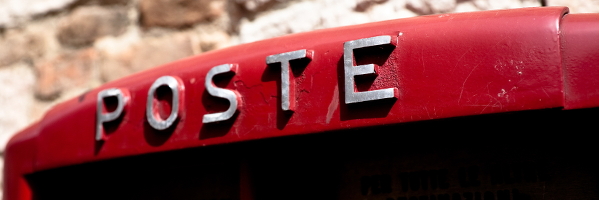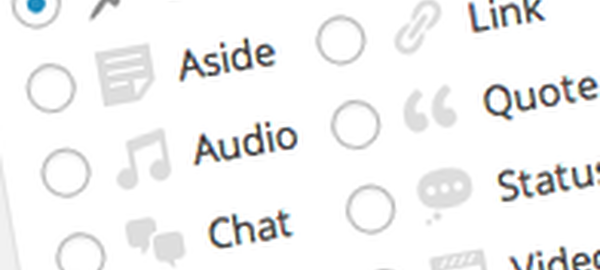Category: WordPress
Comments on the world’s favorite blogging tool.
Embedding Tweets in Your Posts
I realize I haven’t posted anything here for a while. Part of this is due to NaNoWriMo, the National Novel Writing Month, which is a contest that occurs every November. Participants attempt to write a 50,000 word novel in the thirty days of the month. Quality isn’t important, only the number of words, yet it’s still difficult to do. This was my fourth attempt, and the first time I successfully wrote the required number of words. Yay me!
Anyway, after focusing so hard on so much writing for so long, I’ve been casting about for something different. I’ve recently gotten into discussions about using Twitter for promotional purposes. I’ve done this rather successfully, primarily by creating Random Writing Prompts (based on the algorithm mentioned here) and quotes from famous authors, like this one:
The voices in my head may not be real, but they have some good ideas! – Anonymous
One thing I’ve been wanting to do for some time is combine the work on my website with my Twitter activities. I’d like to have quotes like the one above available for readers to share by simply clicking on them. This is where the Inline Tweet Sharer comes in. It’s a WordPress plugin that allows you to place shortcodes in your posts that turn into clickable links. Visitors can click on the link and immediately tweet the text. Try it!
I’ve installed it here, and it seems to work well. The installation is fairly simple, with one gotcha: It uses bit.ly for link shortening and links back to your website. You need to have a bit.ly account, and then there’s a procedure you need to walk through to hook your website up to bit.ly so it can do its stuff. The instructions are included on the settings page, so it’s not too bad, but it’s not quite plug-n-play.
Give it a try and tell me what you think!
Fixed, Fluid, Elastic, Responsive, or Adaptive Layout?
[A question came up recently in a discussion group on Facebook about the differences between fixed, fluid, elastic, responsive, and adaptive website design. Here’s my response.]
A fixed design is where the layout uses absolute values (usually pixels) for everything. Sites used to be designed for minimum screen widths of 640px, then 1024px, and so on. A common convention today is to set up a grid that’s 960px wide, configure it to center within the browser window, and design the layout within that grid. And hope that a goofy browser doesn’t break it.
Continue reading “Fixed, Fluid, Elastic, Responsive, or Adaptive Layout?”
Post Types in WordPress
After I posted about Post Formats in WordPress a friend of mine asked this question:
“What’s the difference between post formats and post types?â€
At the time I didn’t think there was any difference, but then I spent some time digging around in the WordPress documentation and reading a bunch of other people’s articles about WordPress, and I think I’ve come up with a way to understand what everybody’s talking about.
The confusion is due to the word “post†and how it’s used.
According to the codex there are five (5) built-in post types:
- post
- page
- attachment
- navigation menu
- revision
You can also create custom post types. It turns out these are all stored in the same table in the WordPress database, but how they’re used is very different. Continue reading “Post Types in WordPress”
Post Formats in WordPress
One thing that I’ve wondered about for quite a while is the box on the right side of the Post Editor dialog that’s titled Format. What do all those formats do? Are they really good for anything? Well today I decided to find out.
The post format documentation isn’t all that helpful to me.
The Post Formats feature provides a standardized list of formats that are available to all themes that support the feature. Themes are not required to support every format on the list.
After reading more closely and following various discussions elsewhere, I understand that post format is a flag that can be used by a theme to change the way a post is displayed. That’s all. The only one that has to be supported is “Standard” (which is this post’s type). All other formats are optional, and if the theme doesn’t support one it reverts back to Standard.
Example Chat
[The following is from a piece called Company Picnic I wrote for the RocNaNo blog.]
“Hey guys! Looks like lunch is here!â€
“Great! I can hardly wait!â€
“Me too! I wonder what’s on the menu today?â€
“I don’t really care. I just hope it’s enough!â€
“Yeah, I hear ya. Remember our last company picnic?â€
“That was a disaster! Rachel said the caterer messed up the order, the caterer said Rache only ordered for two hundred instead of two thousand, and everybody went hungry.â€
“Terrible mess, that was.â€
Example Audio
Orgelbuchlein #5, “Puer Natus in Bethlehem” from theBachWorks.
The same thing using the WordPress embed method:
Here’s the link to download Puer Natus, bwv 603.


